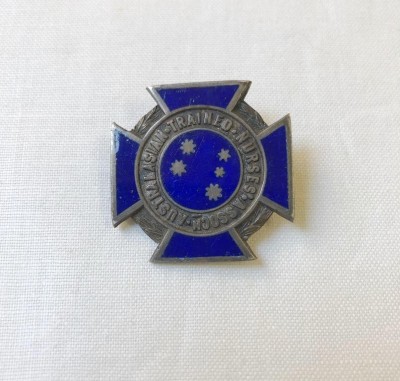The move from home into hospital care in the later part of the 19th century bought with it workforce development, formal training, registration, regulation, and other mechanisms of professionalisation that helped nursing to become seen as one of the few respectable career options for women. In time, nurses began to seek appropriate recognition and payment for their skills and care. Nurses began to organise and campaign, forming associations such as the International Council of Nurses in 1895 in the UK.
Matron of Royal Prince Alfred Hospital, Susan McGahey (1862-1919) convened a meeting of nurses, medical professionals and interested members of the public in Sydney on 26 May 1899. In December, Australia’s first nursing association The Australasian Trained Nurses’ Association (ATNA) was formed.
The ATNA sought to improve the status of nurses through keeping a register of trained nurses, and to develop standards of training by promoting formal standardised training and registering hospitals as schools of nursing training.
The specific objects of the Australasian Trained Nurses’ Association were:
- To promote the interests of trained nurses in all matters affecting their work as a class
- To establish a system of registration for trained nurses
- To afford opportunities for discussing subjects bearing on the work of nursing
- To initiate and control schemes that will provide nurses with an allowance ‘during incapacity for work caused by sickness, accident, age or other necessitous circumstances’
and their published aims were:
- ‘To scrutinise the qualifications of applicants to be placed on a register of trained nurses
- To recognize certain hospitals as training schools from which hospital certificates would be accepted by the ATNA
- To approve the nomination of any matrons to hospitals that received a government subsidy
- To establish a minimum standard of education for nurses’
The ATNA commenced publication of its journal Australasian Nurses’ Journal in 1903. ATNA branches were established in Queensland in 1904, South Australia in 1905, Western Australia in 1907 and Tasmania in 1908, with each having its own Council and managing its own affairs under the ATNA umbrella.
In Victoria, the Victorian Trained Nurses Association (VTNA) was established in 1901, becoming the Royal Victorian Trained Nurses Association (RVTNA) in 1904. Midwifery was deemed to be a ‘special’ branch of nursing. To register with the VTNA nurses were required to undertake an examination, first held in December 1902. Like the ATNA, the VTNA was primarily concerned with nurse training and registration. The ATNA and VTNA enjoyed a strong relationship, reciprocal membership, and established clearly defined working boundaries. The VTNA began publishing its journal Una in 1903.
In 1903, midwifery nurses began to experience similar training and registration arrangements with the nursing associations.

Badge: Australian Trained Nurses Association; 1923; Health Museum of South Australia © AR#1005
Various State Governments passed legislation regulating nurses and midwives, such as
Tasmania was the first State in the newly formed Federation of Australia to enact legislation to raise the quality of midwifery in The Midwifery Nurses Act 1901, the The Midwives Act 1911, and the Nurses Registration Act 1927
WA, The Health Act 1911 to register midwives, followed by The Nurses Registration Act 1921
Queensland, The Health Act Amendment Bill 1911 registering nurses, specifying the length of nursing and midwifery training, and controlling private hospitals
Victoria, The Midwives Act 1915 established the Midwives Board, Nurse Registration Act 1923, and the Midwives Act 1928
SA, The Nurses Registration Act 1920, and the first Nurses’ Registration Board, responsible for the general training and examination of all registered nurses in the State
NSW, The Nurses’ Registration Act 1924
This meant that nurses and midwives had to be registered by the State and not by a private organization such as ATNA. In NSW it also made it illegal for unregistered midwives to be employed to assist in a birth.
Read more
Read about Midwifery in Melbourne on eMelbourne, and the RVTNA Register
Australasian Trained Nurses Association on Trove and on The Australian Women’s Register
The ATNA Register of members 1905-1923 is available in the National Library of Australia
A comprehensive exploration of the history of nurse education in Australia can be found on the Australian College of Nursing website, particularly part 3 and part 4
Read Deborah Burrows Nurses of Australia: The illustrated story, chapter 4 “Qualified, organised and registered”
